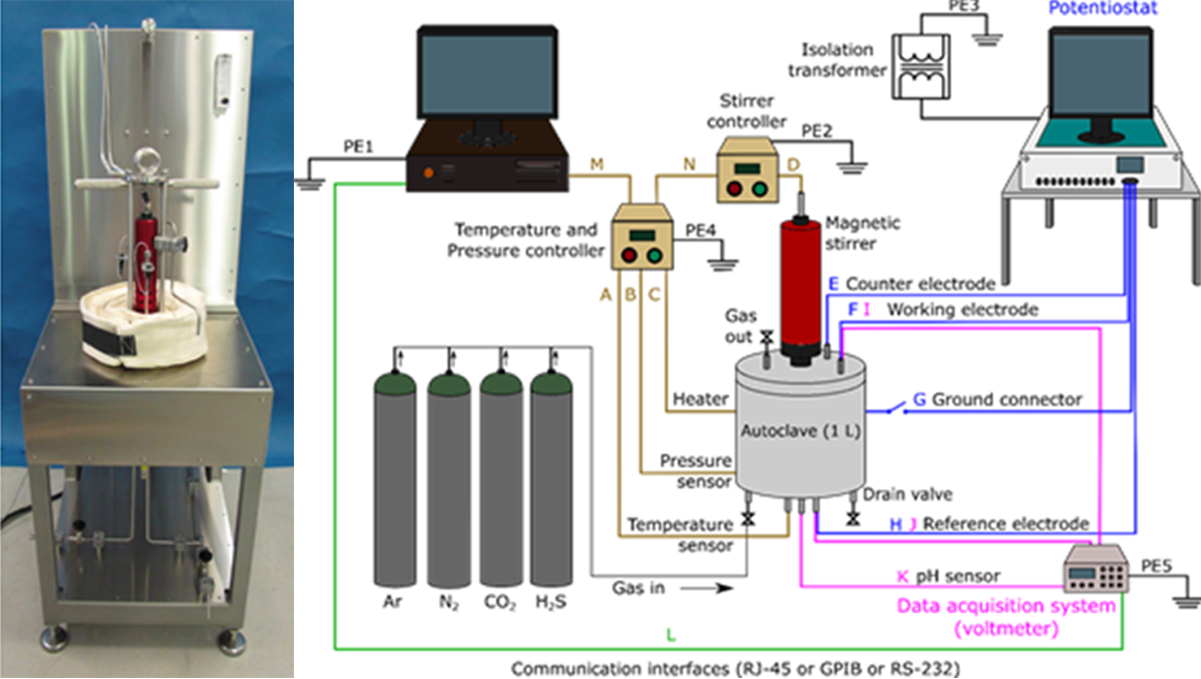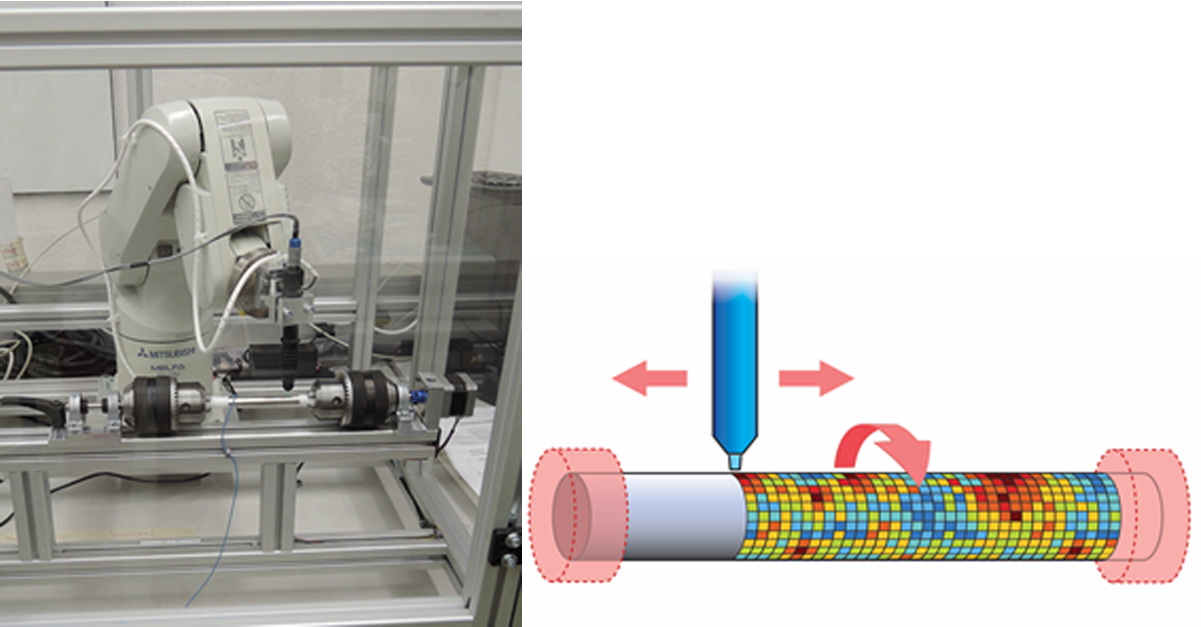Laboratory equipment
List of equipment of the corrosion and electrochemistry laboratory
Electrochemical workstations
Four full-featured potentiostats/galvanostats, capable of performing all techniques, including electrochemical impedance spectroscopy:
- Metrohm Autolab external page PGSTAT30 with Nova 2.1
- Metrohm Autolab external page PGSTAT302N with Nova 2.1
- Gamry Interface external page 1010E (x5)
Dataloggers for corrosion monitoring
In total, we have capacity to continuously log 120 channels of potentials and currents. We use the following instruments:
- external page Keithley 2701 + Multiplexer 7702
Benchtop and handheld multimeters
- Keithley external page 2000
- Keithley external page 2001
- Escort LCR meter
- Gossen Metrawatt «Geohm»
- Various handheld multimeters (Fluke, etc.)
Laboratory instruments
- Mettler Toledo external page pH- and Conductivity-Meter
- Sutter Instrument external page Model P-97 Flaming/BrownTM Type Micropipette Puller
- Rotating Disk Electrode (IPS)
- Thorlab Active Light Reflectance Spectrometer UV-Vis
Non-destructive test equipment
- Proceq Canin+ (for on-site measurements of electrochemical potentials with a single or a wheel electrode in order to detect corrosion in a concrete structure).
- Proceq external page Profometer 650 AI (for on-site measurements of concrete cover and/or rebar dimensions).
- Proceq external page GPR Live – Ground Penetrating Radar (for on-site detection of rebars, delaminations, etc. in reinforced concrete at depths up to 70 cm)
Setup for electrochemical corrosion testing at elevated temperature and pressure
We have a high temperature (up to 220 °C) and high pressure (up to 70 bar) electrochemical autoclave (1-L volume), equipped with a external page magnetic stirrer, a external page pH sensor, and gas needle valves to inject different gases (N2, Ar, CO2, H2S). The autoclave setup also contains a reference electrode (Ag/AgCl/sat. KCl) and a counter electrode and allows for complete online electrochemical testing.
We used this setup primarily for corrosion studies in the context of deep geothermal energy installations.

Automated local electrochemical metal surface characterization
We have a self-developed robotic system that allows positioning a local electrochemical probe on pre-defined locations on metal surfaces. A particular advantage is that this can be applied to non-flat metal surfaces, including corrugated reinforcing steel bars, where the entire circumference of the bar surface can be electrochemically characterized. The setup consists of a 5-axes robotic arm, used to position a local electrochemical sensor. This sensor consists of a reference electrode and a counter electrode and an electrolyte compartment as well as a porous membrane tip (contacting area approx. 1 mm2) to locally bring the electrolyte into contact with the metallic specimen under test. The robotic setup has an interface to communicate with a potentiostat (Gamry Interface 1010) to fully automate the electrochemical mapping of the metal sample.
More detailed information about the local electrochemical characterization technique can be found in the following publication:

Linux node for numerical simulations
For more demanding computations there is a linux server which can be used by our group. It contains a 16 core AMD CPU, 128 GB RAM, and a nVidia RTX 3090 GPU.